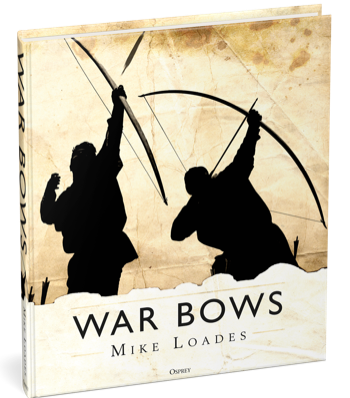 With his signature hands-on style, Mike Loades experiences what it is like to handle various dogs engaged in their traditional tasks. These adventures take him to the Jordanian desert, where he shares the saddle of his camel with a Saluki and to the green hills of Wales, where he works cattle with a Corgi. He mushes Huskies in Alaska, drives carriages with Dalmatians and flies falcons with Spaniels.
With his signature hands-on style, Mike Loades experiences what it is like to handle various dogs engaged in their traditional tasks. These adventures take him to the Jordanian desert, where he shares the saddle of his camel with a Saluki and to the green hills of Wales, where he works cattle with a Corgi. He mushes Huskies in Alaska, drives carriages with Dalmatians and flies falcons with Spaniels.
Each encounter not only highlights the bond between humans and dogs, it also frames that connection in its historical context. Different types of dogs appear the way they do because, at some stage in their development, they were bred selectively for a specialist job.
The author takes key types on a walk through history. Along the way he explores the methods and practices of their original occupations. He delves into when, where and why they were first bred as the types we recognize today. The fascinating and engaging text is supported by over 250 stunning colour photographs of dogs in action. It results in an illuminating journey through many cultures and time periods. This book is a personal and heartfelt tribute to the enduring partnership between humans and dogs.
Chapters: Herding and Droving Dogs. Flock Guardians. Sled Dogs. Cart Dogs. Carriage Dogs. Water Dogs. Game Finders (Spaniels, Setters, Pointers and Tollers). Sighthounds. Scenthounds. Mastiffs. Terriers. Companion Dogs.
 This superbly produced and lavishly illustrated hardback volume incorporates material on bows in military use – the longbow, the crossbow, the composite bow and the Japanese bow.
This superbly produced and lavishly illustrated hardback volume incorporates material on bows in military use – the longbow, the crossbow, the composite bow and the Japanese bow.
The longbow rose to military prominence in Europe towards the end of the 13th century, though it was in existence much earlier. Longbows were made from a single stave of wood, principally, though not exclusively, yew. The length of the longbow allowed for a long draw, increasing the force with which arrows could be shot. It was a mainstay of English armies during the 100-Years-War.
The crossbow’s chief advantage lay in the ability to ready a shot and then hold it until the optimal moment. This made it ideal for siege situations. It was also a significant battlefield weapon in Ancient China. On the European battlefield, it was the principal missile weapon from the 11th to 14th centuries. It was first superseded, in English armies, by the longbow, and subsequently, in all armies, by gunpowder weapons.
The composite bow was the elite weapon for Steppe Nomads and for high status warriors of numerous other Eastern and Near Eastern cultures. It appeared in a variety of forms and sizes. All composite bows were constructed from an assembly of wood, horn, sinew and glue, with techniques that enabled them to be preformed into recurved shapes. Composite bows were the weapon of the horse-archer and they were shot with a thumb draw.
The Japanese bow – the yumi – was the defining symbol of the samurai class in Japan until the late 16th century. The yumi was a distinctively asymmetric longbow. From the 9th century it was constructed in laminate form, using bamboo and haze wood. Various configurations of lamination evolved in the ensuing centuries but the external profile remained the same. Its history is steeped in custom and ritual as well as triumph on the battlefield.
 Swords and Swordsmen has been received with wide critical acclaim in the press and has over 50 favourable reviews on the UK and US Amazon combined.
Swords and Swordsmen has been received with wide critical acclaim in the press and has over 50 favourable reviews on the UK and US Amazon combined.
Lavishly illustrated, Swords and Swordsmen chronicles the history of the sword, its methods of manufacture and its systems of use, interwoven with tales of the men who lived and died by it. It spans many cultures and periods from Ancient Egypt to the American Civil War and is an in-depth study that is a must for anyone with an interest in swords or military history.
Swords and Swordsmen has been written with a style and approach seldom found in non-fiction work. It is at heart a factual book but it has been written in a narrative style and peopled with characters that combine to make it read as a compelling story. One that reaches out to be read and understood by the general history buff as well as the sword expert.
Chapters: The Sword of Tutankhamun . Swords of the Iron Age . The Sword of King Raedwald . The Swords of the Northmen . The Sword of King Henry V . Medieval Diversity . The Sword of Maximilian I . The Sword of Uesugi Kenshin . The Sword of Honour and the Rise of the Civilian Duel . The Sword of Henri IV, King of France . The Sword of Oliver Cromwell . The Gentleman’s Companion: Age of the Smallsword . The Many Swords of George Washington: The Sword of Lieutenant Henry Lane, Hussar at Waterloo . The Swords of J.E.B. Stuart and G.A. Custer.





